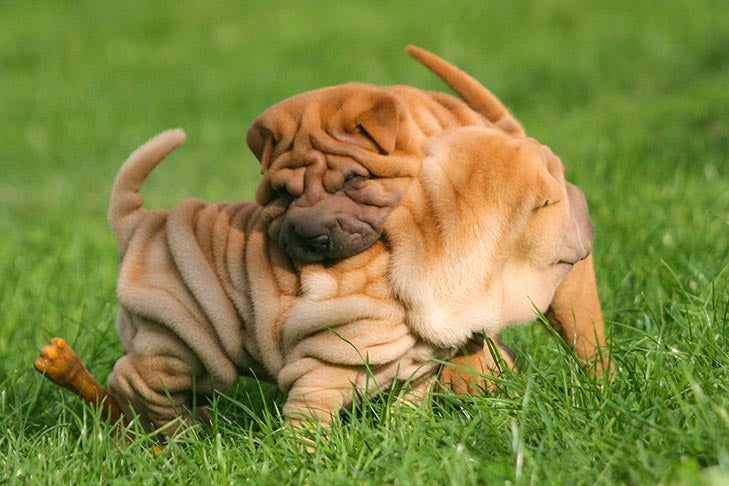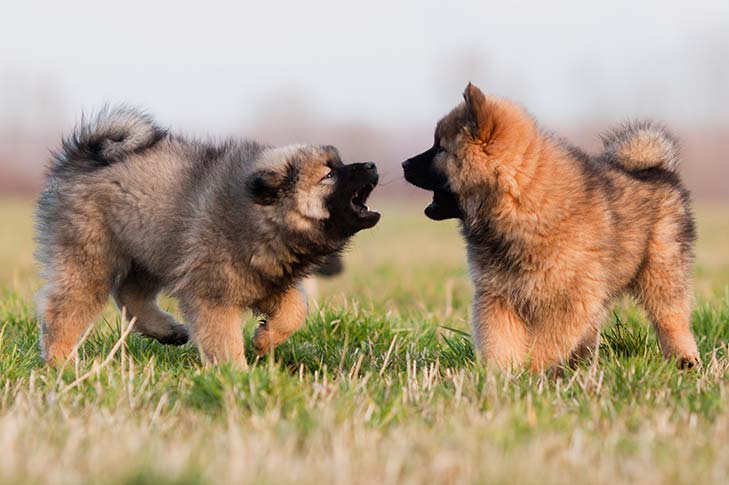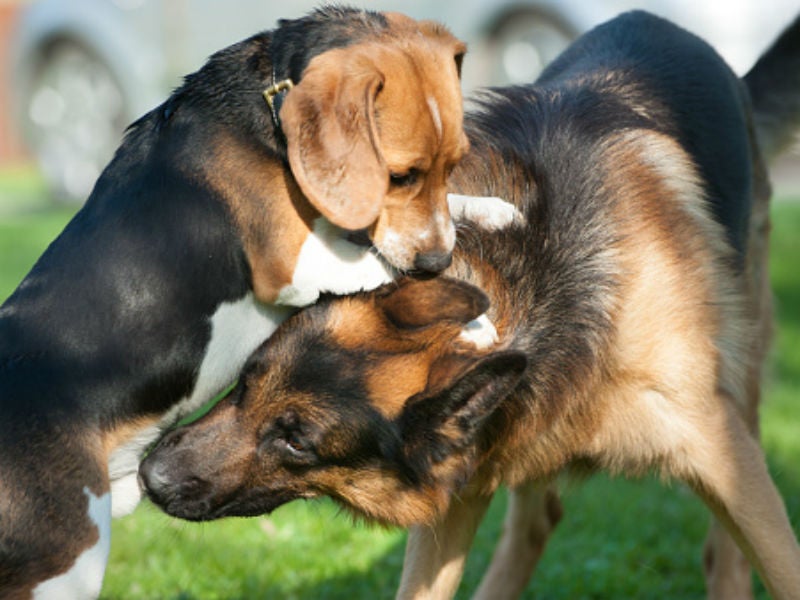
If two dogs are wrestling and it seems too rough to you, with all that growling and snarling, body-slamming, and biting of each other’s necks, should you intervene? How can you tell if dogs are playing or fighting?
This is normal dog play. Puppies play with their littermates constantly. From around two weeks, when their eyes open, until they go to their own homes, they spend almost all of their waking hours wrestling with each other. It’s a critical time for social development because it is when they learn bite inhibition and good dog manners. It is good exercise and socialization for them and fun for us to watch. But you should learn how to tell the difference between playing and a real fight when adult dogs are involved.
Behaviors that say it’s all good fun
- The play bow – front end down, back end in the air. Sometimes the dog trying to initiate play will slap his front legs down on the ground repeatedly.
- A big, silly open-mouthed grin.
- Exaggerated, bouncy movement. The dogs are acting silly.
- Loud, continuous growling and snarling; again, exaggerated. Play-growling may sound scarier than serious fighting.
- The dogs voluntarily make themselves vulnerable by “falling” down and exposing their bellies and allowing themselves to be caught when playing chase. They take turns chasing each other.
- They keep going back for more. Even the dog that ends up on his back doesn’t want to stop playing. They will probably take turns with most play-fighting behaviors.
Behaviors that tell you this is not a game
- The dogs’ bodies get very stiff. Hackles (the hair on a dog’s upper back) are raised. You may not be able to see this if the dog has long hair.
- Closed mouth, curled lip, low warning growl.
- Movements will be quick and efficient – no bouncing around, no taking turns.
- Ears will be pinned flat and lips curled back and snarling. No big silly smiles.
- If the dogs get into actual combat, hopefully it will be a short encounter, and the “loser” will try to leave the area. There won’t be going back for more play.
- The dog is trying to get away from the other one, and her body language is not happy and bouncy. Tail is tucked. She isn’t having fun.
Tips to ensure safe dog-wrestling
- Not every dog is meant for the dog park, and that’s OK. Some breeds are just quick to take offense. They may be better off playing at home with you or with a dog buddy they know well.
- Don’t allow a puppy or dog to be ganged up on by other dogs. Even if she doesn’t get hurt, a bad experience with other dogs can traumatize her and cause fearfulness that will be hard to overcome.
- Keep food and toys out of the picture. Most dogs are possessive of their food and their stuff. To them, it’s worth fighting for.

Have a plan for home and away
If your dog does get into a real fight, do not attempt to separate the dogs by grabbing a collar or using any part of your body. You will likely get bitten. There are safer ways to break them up.
A loud noise might distract the dogs. Keep a small air horn in your car. If a hose is available, spray their heads with water. At home, find something big and flat, like a piece of plywood or a baby gate, which can be put between the dogs.
The best way to avoid a fight is to recognize the signs of potential conflict and act quickly and calmly to separate the dogs before the situation escalates and everyone can continue having a good time.


